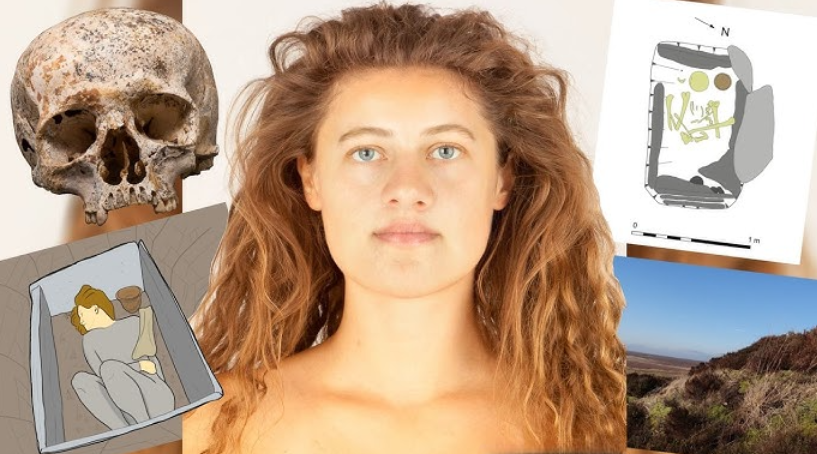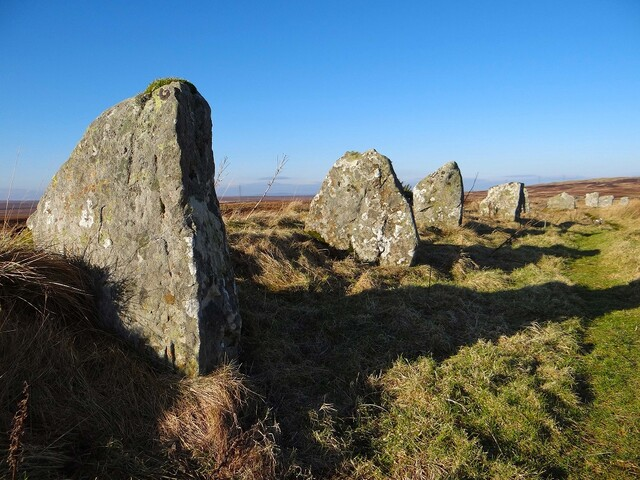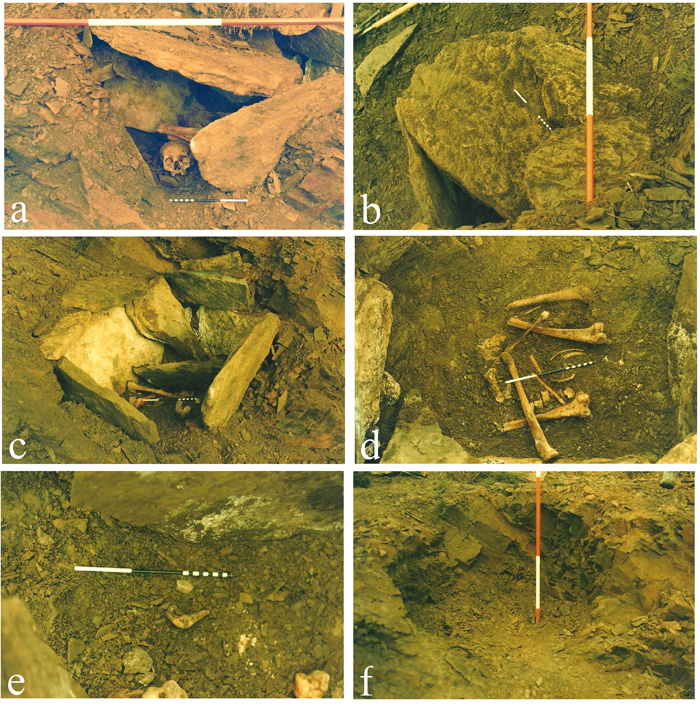In 1987, archaeologists made a stunning discovery near Achavanich in the Scottish Highlands: the remains of a young woman buried in a stone cist grave more than 4,000 years ago. She came to be known as “Ava” short for Achavanich and her burial puzzled researchers for decades. Who was she? Where did she come from? And why did her burial style differ so significantly from others in the region?
Thanks to groundbreaking advances in DNA analysis, we now know something remarkable: Ava wasn’t originally from ancient Scotland. Instead, she was part of a wave of migrants from continental Europe, bringing with them a revolutionary new culture the Beaker culture that would reshape Britain forever.

A Unique Burial in the Highlands
Ava’s grave stood out from the beginning. She was found buried in an unusual rock-cut tomb, with her skull facing the wrong direction compared to typical Bronze Age burials in the area. Even more intriguing was the shape of her skull, which had features not typically associated with the local population.

There were no extravagant treasures buried with her just a finely crafted beaker-shaped pottery vessel, a hallmark of the mysterious Beaker culture. For years, archaeologists debated whether her unique burial was due to status, cultural difference, or something else entirely.
Video:
Reconstructing ‘Ava’: Achavanich Beaker Burial Project
DNA Reveals a Migrant’s Story
It wasn’t until modern DNA testing was applied to Ava’s remains that her real story began to emerge. Geneticists confirmed that Ava’s ancestry traced back to Central Europe. Her family was part of a larger wave of migrants who began moving into Britain around 4,250 years ago during the Early Bronze Age.
These people brought not only a new genetic lineage but also a radically different way of life. Known collectively as the Beaker people named after their distinct pottery style they introduced new burial practices, tools, and social customs that would change the cultural landscape of the British Isles.

The Beaker Revolution
The arrival of the Beaker culture marked a turning point in prehistoric Britain. The Beaker people were skilled metalworkers, farmers, and horse riders. They introduced copper and, later, bronze tools that improved everything from farming to warfare. Their burial practices, with individual graves and specific grave goods, replaced older traditions of mass communal tombs.
Video:
Reconstructing ‘Ava’ Based on DNA: Achavanich Beaker Burial Project
Ava was likely part of this transformative period. Her presence in Scotland, so far from her ancestral homeland, reveals that Bronze Age Europe was far more connected than we once imagined. Trade, migration, and cultural exchange were shaping lives and communities across vast distances.
A Window Into the Past
What makes Ava so compelling isn’t just her ancient origin it’s what her story tells us about humanity. She lived at a time of great change, when people were moving across continents, forming new societies, and adapting to new landscapes. Her life is a reminder that migration, integration, and cultural blending are not modern phenomena they are threads woven into the fabric of human history.
Ava’s DNA doesn’t just tell us where she came from. It tells us that even in the Bronze Age, the world was interconnected. Ideas, people, and traditions flowed between regions, creating a vibrant and diverse Europe.

From Mystery to Meaning
Today, Ava’s story continues to evolve as scientists and historians dig deeper into the past. Thanks to cutting-edge forensic reconstruction, we now even have a digital likeness of her face a striking reminder that she was not just an artifact, but a living, breathing person with a story to tell.
From her Highland tomb to the laboratories of geneticists, Ava’s journey shows how science and archaeology can bring the ancient world back to life. She stands as proof that history isn’t just written in books it’s carried in our bones, our cultures, and our shared human journey.



